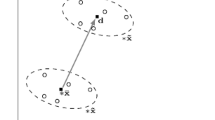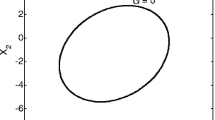Abstract
A probabilistic sufficiency factor approach is proposed that combines safety factor and probability of failure. The probabilistic sufficiency factor approach represents a factor of safety relative to a target probability of failure. It provides a measure of safety that can be used more readily than the probability of failure or the safety index by designers to estimate the required weight increase to reach a target safety level. The probabilistic sufficiency factor can be calculated from the results of Monte Carlo simulation with little extra computation. The paper presents the use of probabilistic sufficiency factor with a design response surface approximation, which fits it as a function of design variables. It is shown that the design response surface approximation for the probabilistic sufficiency factor is more accurate than that for the probability of failure or for the safety index. Unlike the probability of failure or the safety index, the probabilistic sufficiency factor does not suffer from accuracy problems in regions of low probability of failure when calculated by Monte Carlo simulation. The use of the probabilistic sufficiency factor accelerates the convergence of reliability-based design optimization.
Similar content being viewed by others
References
Birger, I.A. 1970: Safety Factors and Diagnostics. Problems of Mechanics of Solid Bodies, 71–82, Leningrad: Sudostroenve (in Russian)
Bucher, C.G; Bourgund, U. 1990: A Fast and Efficient Response Surface Approach for Structural Reliability Problems. Struct Safety7, 57–66
Elishakoff, I. 2001: Interrelation between Safety Factors and Reliability. NASA/CR-2001-211309
Fox, E.P. 1993: Methods of Integrating Probabilistic Design within an Organization’s Design System Using Box-Behnken Matrices. Proc. of 34th AIAA/ASME/ASCE/AHS/ASC Struct., Struct. Dyn., Mater. Conf. (held in LaJolla, CA, USA), 714–723, AIAA-1993-1380
Fox, E.P. 1994: The Pratt & Whitney Probabilistic Design System. Proc. of 35th AIAA/ASME/ASCE/AHS/ASC Struct., Struct. Dyn., Mater. Conf. (held in Hilton Head, SC, USA), 1075–1085, AIAA-1994-1442
Fox, E.P. 1996: Issues in Utilizing Response Surface Methodologies for Accurate Probabilistic Design. Proc. of 37th AIAA/ASME/ASCE/AHS/ASC Struct., Struct. Dyn., Mater. Conf. (held in Salt Lake City, UT, USA), 1615–1622, AIAA-1996-1496
Freudenthal, A.M. 1962: Safety, Reliability and Structural Design. ASCE Trans127, 304–323
Khuri, A.I.; Cornell, J.A. 1996: Response surfaces: designs and analyses. 2th edn. New York: Marcel Dekker
Melchers, R.E. 1999: Structural Reliability Analysis and Prediction. New York: Wiley
Myers, H.R.; Montgomery, D.C. 1995: Response Surface Methodology. New York: Wiley
Qu, X.; Venkataraman, S.; Haftka, R.T.; Johnson, T.F. 2003: Deterministic and Reliability-based Optimization of Composite Laminates for Cryogenic Environments. AIAA J.41, 2029–2036
Qu, X.; Haftka, R.T. 2003: Design under Uncertainty Using Monte Carlo Simulation and Probabilistic Sufficiency Factor. Proc. of ASME DETC’03 Conf. (held in Chicago, IL, USA)
Rackwitz, R. 2000: Reliability Analysis – Past, Present and Future. Proc. of 8th ASCE Specialty Conf. on Probab. Mech. and Struct. Reliab. (held in South Bend, IN, USA), PMC 2000-RRR
Rajashekhar, M.R.; Ellingwood, B.R. 1993: A new look at the response surface approach for reliability analysis. Struct Safety12, 205–220
Romero, V.J.; Bankston, S.D. 1998: Efficient Monte Carlo probability estimation with finite element response surfaces built from progressive lattice sampling. Proc. of 39th AIAA/ASME/ASCE/AHS/ASC Struct., Struct. Dyn., Mater. Conf. (held in Long Beach, CA, USA), 1103–1119, AIAA-1998-1826
Sues, R.H.; Oakley, D.R.; Rhodes, G.S. 1996: Portable Parallel Computing for Multidisciplinary Stochastic Optimization of Aeropropulsion Components. Final Report, NASA Contract NAS3-27288
Sues, R.; Casare, M.; Pageau, S.; Wu, Y-T. 2000: Reliability Based MDO for Aerospace Systems. Proc. of 8th Symp. on Multidisc. Anal. Optim. (held in Long Beach, CA, USA), AIAA-2000-4804
Tu, J.; Choi, K.K.; Park, Y.H. 2000: “Design Potential Method for Robust System Parameter Design,”AIAA J.39, 667–677
Wu, Y-T.; Wang, W. 1998: Efficient Probabilistic Design by Converting Reliability Constraints to Approximately Equivalent Deterministic Constraints, J Integr Des Process Sci2, 13–21
Wu, Y-T.; Shin, Y.; Sues, R.; Cesare, M. 2001: Safety-Factor Based Approach for Probability-based Design optimization. Proc. of 42th AIAA/ASME/ASCE/AHS/ASC Struct., Struct. Dyn., Mater. Conf. (held in Seattle, WA, USA), AIAA-2001-1522
Author information
Authors and Affiliations
Corresponding author
Rights and permissions
About this article
Cite this article
Qu, X., Haftka , R. Reliability-based design optimization using probabilistic sufficiency factor. Struct Multidisc Optim 27, 314–325 (2004). https://doi.org/10.1007/s00158-004-0390-3
Received:
Revised:
Published:
Issue Date:
DOI: https://doi.org/10.1007/s00158-004-0390-3




